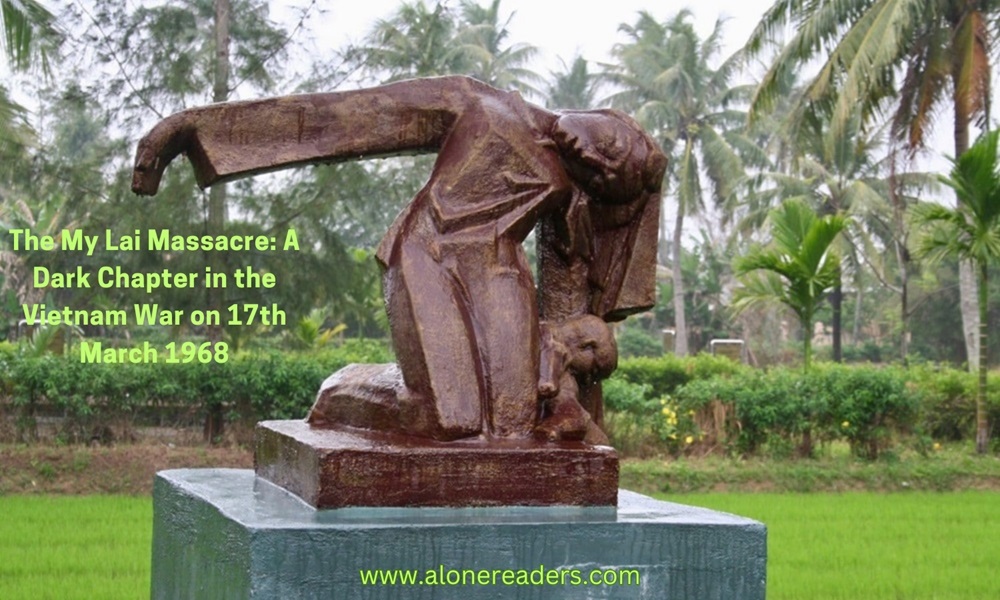
On March 17, 1968, amidst the tumult and chaos of the Vietnam War, a heart-wrenching incident unfolded in the small hamlet of My Lai, which laid bare the stark and brutal realities of war. As dawn broke, U.S. soldiers, part of Charlie Company, 1st Battalion, 20th Infantry Regiment, 11th Infantry Brigade, were dispatched on a search-and-destroy mission to My Lai. This mission tragically spiraled into one of the most heinous war crimes committed by American forces during the 20th century.
Located in the Quang Ngai province of South Vietnam, My Lai was perceived as a stronghold of the National Liberation Front, commonly known as the Viet Cong. The troops were under the impression that they would encounter enemy combatants in the village. However, upon their arrival, they found mostly women, children, and elderly residents. What unfolded next was a chilling and unjustifiable massacre.
Over the course of several hours, the soldiers, under the command of Lieutenant William L. Calley Jr., proceeded to kill an estimated 500 unarmed villagers. The brutality included not just indiscriminate shooting, but also other horrific acts of violence. Women and girls were subjected to sexual assault, while houses were looted and burned. Livestock was slaughtered, adding to the sense of rampant destruction. The scale and nature of the violence were extreme and unprovoked, highlighting a complete breakdown of moral and military discipline.
The My Lai massacre remained largely unknown to the public for a year, until investigative journalists exposed the truth. The revelation caused an uproar, both internationally and within the United States, intensifying the already growing anti-war sentiment. The incident raised profound questions about the conduct of American soldiers in Vietnam and the policies of warfare they were ordered to execute.
One of the pivotal figures in bringing the events of My Lai to light was Ronald Ridenhour, a former soldier who heard about the massacre from fellow soldiers. He sent letters to President Nixon, the Pentagon, State Department, and members of Congress. In response to the emerging details, the Army initiated an investigation, leading to the court-martial of several soldiers, including Lieutenant Calley.
The trial and subsequent conviction of Calley sparked a complex debate. Calley was found guilty of killing 22 villagers and sentenced to life in prison, but his sentence was reduced to house arrest following a public outcry and political intervention. Some saw him as a scapegoat, while others viewed him as a symbol of the atrocities committed in Vietnam. The leniency in his punishment raised further questions about accountability and justice in times of war.
My Lai had a profound impact on military ethics and training. In the wake of the massacre, the U.S. military implemented more rigorous training in the laws of war and the rules of engagement. It became a case study in military curriculums around the world, a grim reminder of the moral responsibilities of soldiers.
The psychological impact of My Lai on the American psyche was significant. It added to the growing disenchantment with the Vietnam War, influencing public opinion and political discourse. The massacre highlighted the complexity and challenges of counter-insurgency warfare, where distinguishing between combatant and civilian can be fraught with moral and ethical dilemmas.
Commemorations and memorials at the site of the massacre stand as reminders of the tragedy. These memorials serve not only as a tribute to the victims but also as a cautionary tale about the horrors of war and the human capacity for brutality. The My Lai Massacre, while a singular event in its scale and severity, is part of a larger narrative of the Vietnam War, a conflict marked by controversy and tragedy.
In remembering My Lai, we confront uncomfortable truths about war, power, and humanity. The massacre challenges us to reflect on the consequences of military actions and the importance of ethical conduct in warfare. It remains a poignant and painful chapter in American history, a symbol of the tragedies that can occur when the fog of war obscures the line between right and wrong.